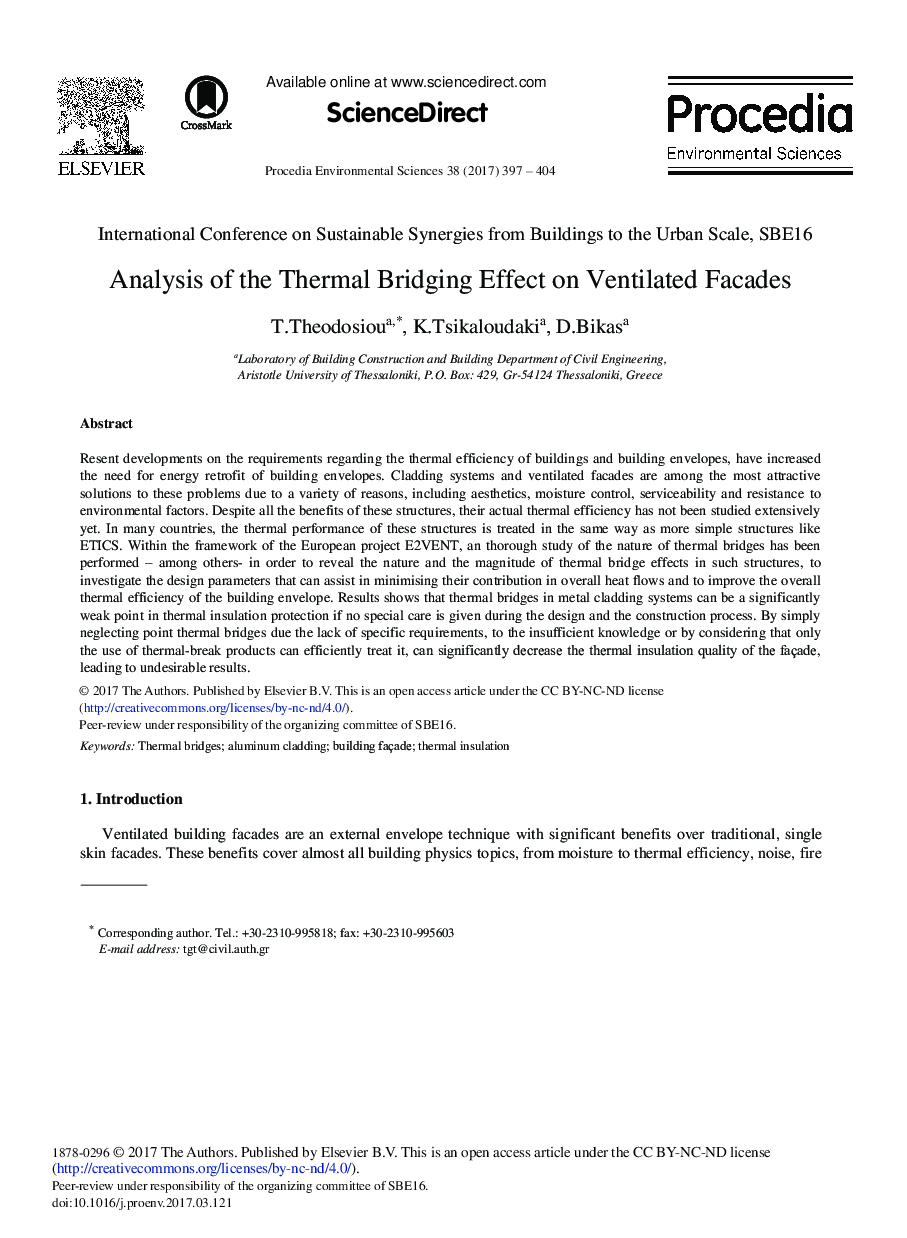| کد مقاله | کد نشریه | سال انتشار | مقاله انگلیسی | نسخه تمام متن |
|---|---|---|---|---|
| 5745055 | 1618606 | 2017 | 8 صفحه PDF | دانلود رایگان |
Resent developments on the requirements regarding the thermal efficiency of buildings and building envelopes, have increased the need for energy retrofit of building envelopes. Cladding systems and ventilated facades are among the most attractive solutions to these problems due to a variety of reasons, including aesthetics, moisture control, serviceability and resistance to environmental factors. Despite all the benefits of these structures, their actual thermal efficiency has not been studied extensively yet. In many countries, the thermal performance of these structures is treated in the same way as more simple structures like ETICS. Within the framework of the European project E2VENT, an thorough study of the nature of thermal bridges has been performed - among others- in order to reveal the nature and the magnitude of thermal bridge effects in such structures, to investigate the design parameters that can assist in minimising their contribution in overall heat flows and to improve the overall thermal efficiency of the building envelope. Results shows that thermal bridges in metal cladding systems can be a significantly weak point in thermal insulation protection if no special care is given during the design and the construction process. By simply neglecting point thermal bridges due the lack of specific requirements, to the insufficient knowledge or by considering that only the use of thermal-break products can efficiently treat it, can significantly decrease the thermal insulation quality of the façade, leading to undesirable results.
Journal: Procedia Environmental Sciences - Volume 38, 2017, Pages 397-404
